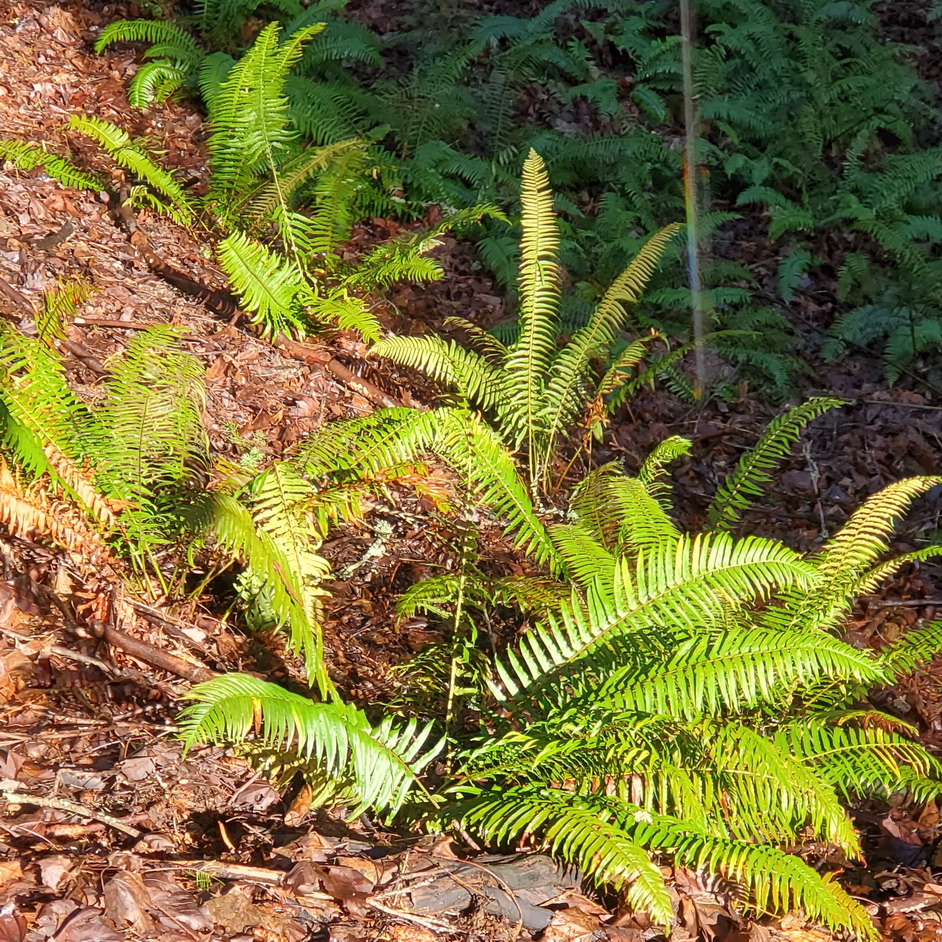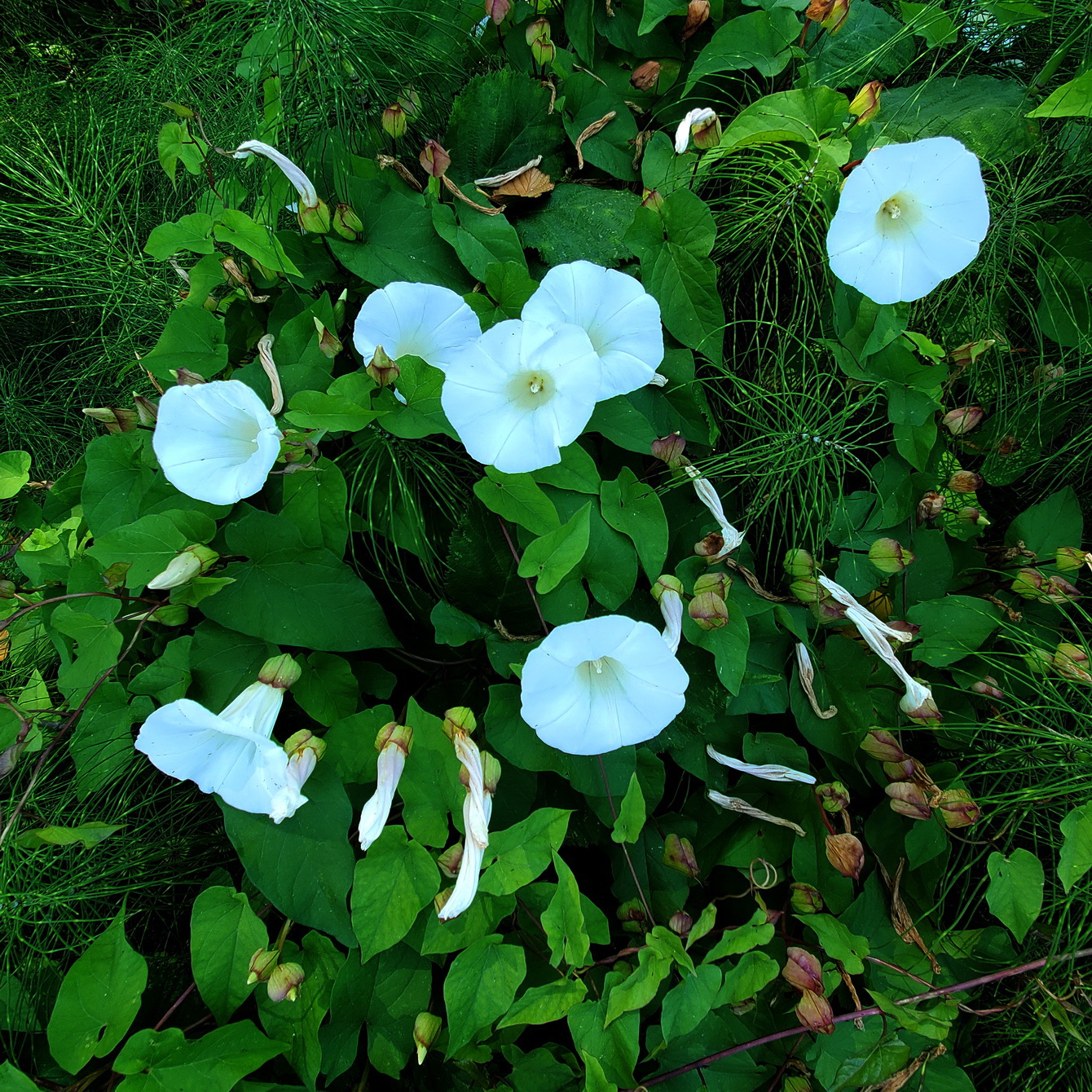Category: Forest Restoration Techniques
-

Rescuing Sword Fern and Bigleaf Maple
The wet season has returned – time for fall planting. I have been rescuing Sword Ferns and Bigleaf Maples and moving them to spots where they have a better chance to grow to maturity.
-

Disposal of Invasive Plants and Other Weeds
For disposal of invasive plants and other weeds, my preference is to compost them in the same general area in which they grew, but sometimes that is not a good option.
-
Mycorrhizal Applications for Backyard Forest Restoration
Lately I have been considering the purchase of a mycorrhizal fungi inoculant to mix into the soil with my Fall/Winter tree plantings.
-
Some Tasks for the Dry Season
Though the dry season is not the best time to be pulling most of the invasive plants, there is still work to be done.
-

Pulling Stinging Nettle in Patches of Hedge Bindweed
As I fight my way through tall vegetation removing masses of Hedge Bindweed, I also pull out any Stinging Nettle I come across even though it may be native to the Pacific Northwest.
-

It’s Not too Late for Hedge Bindweed
I know it has already started blooming, but I don’t think it’s too late to work on the Hedge Bindweed. Since I don’t know how to eradicate this invasive, I’m only trying to contain it . . .
-

Glad to have “Mudded In”
I’ve spent the last few mornings watering plants in the midst of this all-time record heatwave in our region. When I planted these trees, shrubs, and ferns back in March and April, I took the extra time and effort to mud them in and, where possible, create basins around them to hold water. I’m glad…
-

An Activity to Celebrate the Summer Solstice
I’m thinking of a nice outdoor activity to celebrate tomorrow’s summer solstice — deciding on the trees I’m going to plant in late Fall.
-

The Bradley Method of Bushland Regeneration
I thank Luke McGuff (who works at North Beach Park) for telling me about the Bradley Method of “bushland regeneration.” The method is named after two sisters, Eileen and Joan Bradley, who developed a successful method of restoring native vegetation to degraded natural areas in Australia. Their ideas are relevant anywhere, including our backyard forests…
-

Forest Edges — Problems and Possibilities
Since the edges of the forest are often sunny, they provide the opportunity to grow a large diversity of native plants, but weeds can be a problem.
-

Done Well, Forest Restoration Includes Caring for the Soil
The rate of topsoil formation in our region is painfully slow – less than 1” every 2,000 years. Only 7” has accumulated (at most) since the last glacier retreated 15,000 years ago.
-

Multiplication by Division in our Backyard Forests
March is here, the best time to start multiplying and dividing in earnest – multiplying some of the native plants we already have growing in our backyard forests, using a plant propagation method known as division.
-

Dividing Sword Ferns (Between Green Blobs)
Honestly, I hadn’t divided Sword Ferns in years, and had only the vaguest recollection of cutting through root masses with a strong, sharp knife. But to my surprise, each of the ferns that I worked with on this day was already “divided.”
-

Preserving Topsoil Versus Removing Ivy
Which is more important, preserving topsoil or removing blankets of Ivy? Before, I would have said removing the Ivy, but now I’m not so sure.
-

Backyard Singular, then Backyards Plural – My Adventure in Backyard Forest Restoration
My adventure with forest restoration began when we purchased an unremarkable house because we were enchanted by a small year-round creek in the backyard.
-

Norway Maples – Now is the Time
Now is a good time to spot and remove small Norway Maples — their leaves have turned a bright yellow and the ground is soft from rain.
-

Welcome to the Wet Season
Welcome to the wet season. Now I can focus on removing the highest priority invasive plants
-

Transplanting a Native Trailing Blackberry
Today, a small Trailing Blackberry was the only native plant growing in a place where I wanted to put a new compost heap, so I decided to move it to another location. It’s a little early to start transplanting since we are still in the transitional period between the dry season and the wet season.…
-

Establishing a Trail to My New Worksite
Such a still morning yesterday, as if the fog had paralyzed all movement. Except for me, groping my way my through a maze of fallen trees and a tangle of invasives that cover the ¾ acre patch of forest I’ve just started to restore. After tripping over the same branches and nearly stepping into the…
-

After a September Rain – A Good Time to Weed a Sunny Edge
We had some good rain in the last few days — a good time to weed a sunny edge.